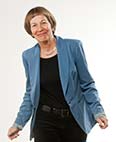|
 |
|
So what was special about the 1911 census? Census resisters - right across England
|
What was special about the 1911 census? The 1911 census, released in 2009, is of special significance for three reasons. First, to provide data for the Liberal government's ambitious welfare reforms, it added new questions about each married woman. It asked how many children were born alive, how many still living and how many had died. In Vanishing for the Vote, there are many schedules that record child deaths. Here is one: of the eight children born, only five are still living. The census schedule of the Mahony family, Middlesbrough on Teesside, The second reason is that 1911 schedules can be read exactly as they were written, usually in the head of household's own hand (rather than, as previously, copied by the enumerator). And third, 1911 was a time of frenzied political activity - including of course the Votes for Women campaigns. With the Liberal government's forcible feeding of hunger-striking suffragettes in prison now in its second year, militant suffragette organizations called for a boycott of the census. Many did support the boycott. One such was businessman Henry Brockhouse. The census schedule of Henry Brockhouse, West Bromwich. Mr Brockhouse has recorded himself as married. His children have helped embellish his schedule: we can still see their doodles. But his wife, local WSPU secretary, appears to be mysteriously absent. She evaded - possibly taking an eldest daughter with her. To warm up to census night, West Bromwich WSPU members performed a sketch, How Cranston was converted to Militant Tactics and Boycotted the Census. Vanishing for the Vote includes the census schedules of many other evaders like Mrs Brockhouse. |


